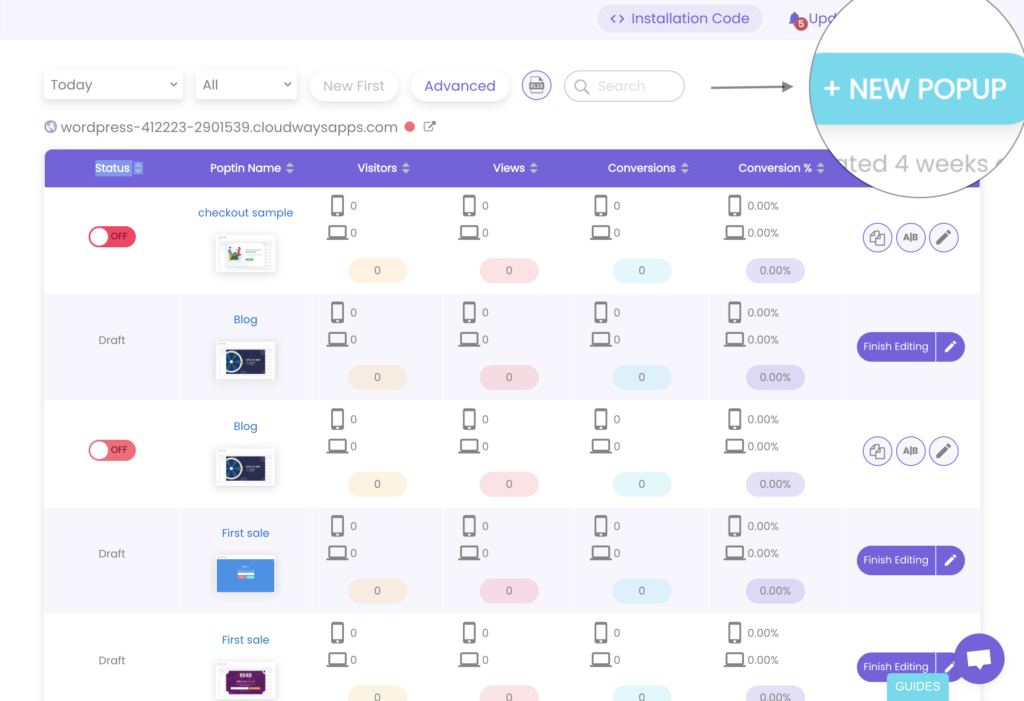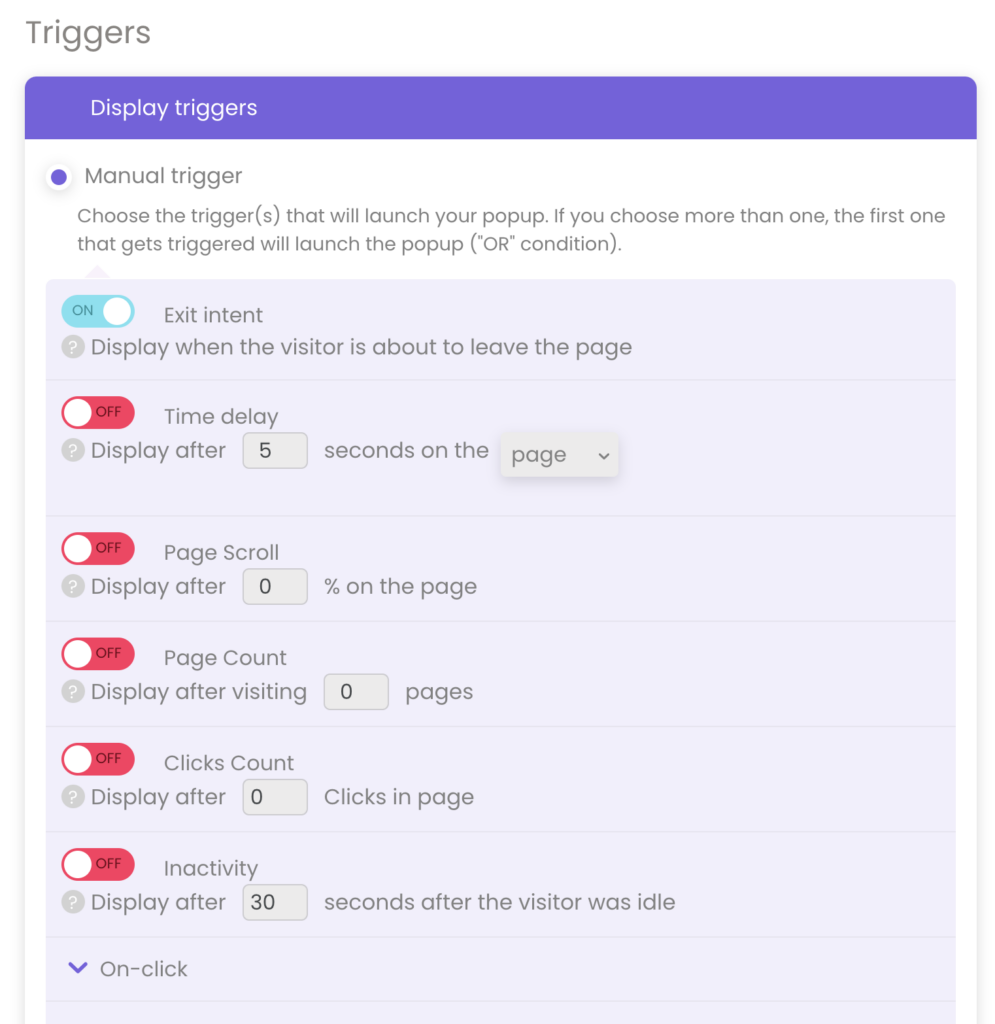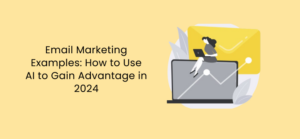Pop ups have become a game-changing tool for businesses across all industries. This is because they offer a great way to get people’s attention in today’s busy world. With so many eye-catching designs and templates to choose from, a popup can easily be used to achieve your marketing and sales goals.
Whether you’re looking to boost sales for your business or optimize your website’s performance, pop-ups offer one of the most efficient approaches to implement as part of your growth strategy. Why is that? It’s really simple as we discuss the different types of popups, their uses, samples, and the technology that drives their effectiveness.
What Is a Pop-up?
A popup is a type of small window that “pops up” on your computer screen when you open or are browsing through a website.
They are powerful for generating customer engagement with your website or other digital platforms and can be used for a variety of purposes such as promoting discounts or specials, displaying notifications, or even asking for feedback or opinions.
Popups, when used rightly, can be an optimal tool used to capture the visitor’s attention, engage them, and ultimately convert them to leads. They are used by businesses to increase website leads and sales to promote engagement, drive traffic, and boost conversions.
In most cases, pop ups are used as a lead generation tool, to form connections with web visitors by prompting them to give their contact information in exchange for a valuable incentive.
Additionally, many business owners use them to promote offers or sales, increase website engagement, and educate visitors about their brand.
Did you know the average rate of conversion through general pop-ups is about 3%? It might not seem much at first, but imagine how much a website can convert over time.
Generally, the idea is to engage website visitors and provide them with more opportunities to interact with and purchase your products or services.
Pop-ups are used by different business owners to typically offer discounts, bonuses, quizzes, surveys, or rewards that can be redeemed. They can also be used to collect user information for building an email or subscriber list which can be used for retargeting.
The Different Types of Pop-ups Available
Since the ultimate goal of a pop up is to capture the attention of a web visitor and convert them into customers, it’s only logical that there will be different ways popups are used to get a visitor’s attention.
To understand what they are and how it works, let’s take a look at the different types of popups available.
Exit-Intent Popups
Exit intent pop ups appear when a visitor is about to leave a website. The exit intent technology tracks the mouse movements of a website visitor and activates a pop-up when the visitor is about to leave the website without taking any action.
Such popups are typically used to capture consumer contact information (like email addresses and names) or offer a discount or freebie in exchange for signing up or subscribing.
Seasonal Popups
Implementing seasonal pop-ups, such as Black Friday popups, is a great way to engage customers during the holidays. These popups could include timers, flash sales, or exclusive offers to customers who subscribe or make a purchase during the festive period.
Countdown Popups
Countdown popups are used to increase visits to a website by showing the remaining time a user has before an offer ends. These could include discounts, limited-time offers, special sales, or advertisements for exclusive items.
Video Popups
If you’ve enjoyed a funny or hilarious video on any popular social media platform, then you should consider creating a video pop up. They are excellent for creating high-quality and engaging pop ups that keep your visitors longer on your website.
They offer an effective way to build brand recognition and show what your business is about in a few seconds. These types of popups can feature a product demonstration, an instructional video, or an influencer-backed campaign that you may be running for your services.
Gamified Popups
Gamified popups are interactive windows compared to their still counterparts. They come in all shapes and sizes but one thing they have in common is that they use game-like features to engage visitors.
Some examples include quiz-style popups that ask questions, spin-the-wheel popups that offer rewards, and leaderboard popups that let people compete against each other. All of these types of popups help to create an engaging experience for visitors and can encourage them to take action.
Most e-commerce sites use gamified pop ups during the festive seasons, such as Christmas or Thanksgiving.
General Popups
This category includes the most basic kind of pop ups available, such as website popups, email forms, contact forms, etc.
Unlike the previous types explained, the goal of these eCommerce popups is to solely collect consumer information and feedback.
How to Create a Popup Using Poptin
1. Sign Up and Access Poptin Dashboard:
Head over to our website and create an account (if you don’t have one already). Once logged in, you’ll land on your Poptin dashboard.

2. Create a New Popup:
In your dashboard, look for the option to create a new popup. This is a button labeled “New Popup“.

3. Choose a Popup Template:

Poptin offers a variety of pre-designed popup templates to get you started. These templates cover various goals like lead generation, promotions, and announcements. You can choose a template that suits your needs or opt for a blank canvas to build your popup from scratch.
4. Design Your Popup:
This is where the fun begins. Poptin provides a drag-and-drop editor that allows you to easily customize your popup’s design. You can add elements like text, images, buttons, and opt-in forms. You can also style the fonts, colors, and layout to match your website’s branding.
5. Set Display Rules:

Poptin allows you to control when and how your popup appears to visitors. You can set triggers like on-page load, after a certain time delay, on exit intent, or by button click. You can also target specific pages, devices, or visitor demographics to ensure your popup reaches the right audience.
6. Integrate with Email Marketing
If you’re using an email marketing service, you can integrate it with Poptin to collect email addresses through your popup form. This allows you to build your email list and nurture leads.
7. Publish and Analyze
Once you’re happy with your popup’s design and settings, hit publish to make it live on your website. Poptin offers analytics to track your popup’s performance. You can see metrics like impressions, clicks, and conversions to understand how effective your popup is.
The Best Practices for Using Pop-ups
Pop ups like any other tool used for achieving growing sales can either produce amazing results or simply annoy your website visitors.
You just can’t place them wherever you want. It’s crucial to know where and when to cue a pop-up. The goal is to convert visitors into long-term customers instead of driving them away from your web page.
As a business owner, you need to strike the right balance between effectively capturing the attention of your consumers without interrupting their browsing experience. It’s not a difficult task, but it does require a little bit of finesse and wisdom. Here are some best practices for using pop ups.
Use Scarcely
Pop-ups should only be used when absolutely necessary and when they can add value to the user experience.
Avoid including popups on every page of your website – this will clutter the user’s browsing experience and won’t be appreciated by them. Instead, only use pop ups when you have an important message, incentive, or offer that you need to communicate with your consumers.
Keep It Simple
To ensure that your pop-ups won’t interrupt or distract from the user experience, make sure they are visually lightweight to keep them concise and direct.
Include only a single message without going overboard with design elements and visuals. This will help to focus your users’ attention on the information at hand while also avoiding the risk of any clutter in their browsing session.
Whether it’s providing a discount code, a complimentary coupon, or even a freebie, make sure that the incentive that you’re providing is something that will be welcomed and seen as valuable to them.
Find the Right Pace
Time your popups correctly according to the context of the user’s interaction on your website. A well-timed pop-up can increase conversion rates and make the user experience even more rewarding.
The worst thing you can do is block visitors with a massive pop-up right when they enter your site. That’ll almost certainly turn them away. Instead, create a friendly, welcome message that won’t interrupt the browsing experience.
To accomplish this, you should bring up the pop up at the right time — for example, when somebody is about to leave your page or when they’ve taken action (e.g., added an object to the cart, etc.).
Be Relatable
Lay down a friendly tone of voice with your popups by making them fun and inviting. Your pop-up should be informal and friendly in order to grab the user’s attention and make sure they feel welcomed and appreciated when they interact with your website.
Your customers and data should be at the center of pop-up content. To get the most out of your popups, make sure you drive the incentive home, so customers know why you’re giving them a promotion or asking for their information. Short, direct messages work best.
Collect Data
Use your pop up to capture data that is valuable to you and your business. Ask the users to provide their email addresses, birth dates, gender, etc. — this will help you to learn more about them and improve the overall quality of your email marketing campaigns or your products/services.
Best Popup Examples to Borrow for Your Campaign
When used correctly, pop-ups can be a great asset to businesses as they strive to capture customer attention. Here are the three most common pop-up templates that you can try out quickly:
Gamified Exit-Intent Popup example
Queuing this pop-up right after a customer is about to leave the webpage with a full cart can be a great way to urge them to shop more with the incentive of free shipping or discounts on items.
Sign-up Popup Example
This popup example from Medium is lightweight and has a friendly tone, urging visitors to signup for their own Medium account. It’s a great example to show how to capture frequent website visitors and convert them further down your sales funnel.
Email Popup Example
This example has a similar color scheme as the background behind it, which helps the popup blend in easily. However, the downside with this example is the lack of CTA – there’s no place to type in email addresses. This could potentially affect their conversion rates on this popup.
In order to avoid errors like this, you should study the strategies we’ve outlined below.
Strategies to Consider When Using Popups in Marketing Campaigns
Effectively marketing your pop-up can improve the overall sales funnel of your business. Here are 7 strategies to consider when using popups for your marketing campaigns:
Provide Relevancy
Don’t implement popups with outdated offers or product promotions. The last thing you want to do is make your customer feel betrayed. Update and maintain your pop-up channel and endorse only relevant discounts and sales.
Use Countdown Timers
Adding a countdown timer can greatly enhance the performance of your popup on your website. It helps to create a sense of urgency in the mind of your web visitors. Mix it up with a strong call-to-action that creates FOMO (fear of missing out) which drives your prospect to take the action you want.
Use Analytics to Boost Conversions
Use triggers and targeting rules that capture website visitors based on their country, pages visited, traffic source, or page scroll to identify opportunities for increasing your conversions. For instance, if you notice that a large number of your sales are coming from the same country, you can offer discounts to more shoppers in exchange for referrals to their friends and families.
Diversify Channels
Instead of promoting one specific type of product/service, diversify your channels and focus on the categories that provide the most value and bring in the most sales.
Optimize Your Timing
Use your popups at the right time, and urge customers to make purchases. If your website traffic increases during certain periods of the day, show popups with offers that are relevant to your target audience. By using a micro-segmentation strategy, you’ll greatly increase the potential of your leads converting to sales.
Keep It Relevant
Make sure the content of your popup is relevant to the user. If they are browsing items in your store, for example, a popup offering a discount on those items is likely to be more effective than a generic offer.
Avoid Being Overly Intrusive
You want to make sure your popups don’t interrupt the user’s experience. Keep them simple, uncluttered, and easy to dismiss.
Final Words
Whether you’re a small business or a large enterprise, pop-ups are a cost-effective and efficient way to increase customer engagement, drive conversions, and stay ahead of the competition. Our easy-to-use, drag-and-drop popup builder is a fantastic choice for achieving your goals.
We offer an array of colorful and customizable popup templates for you to choose from; triggers and targeting rules to boost your efforts and analytics to measure the performance of your campaign performance and optimize for the highest conversion rate. This helps you take full advantage of website traffic and convert them into leads, sales, and subscriptions.




